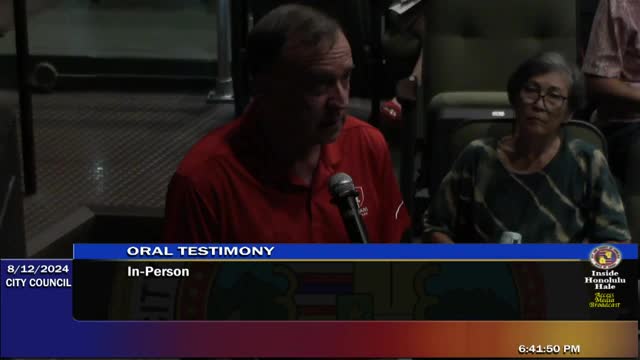City plans ambitious housing growth to tackle demand
August 13, 2024 | Honolulu City, Honolulu County, Hawaii

This article was created by AI summarizing key points discussed. AI makes mistakes, so for full details and context, please refer to the video of the full meeting. Please report any errors so we can fix them. Report an error »

During a recent government meeting, officials discussed the critical need for a comprehensive housing strategy to address the growing demand for residential units in the city. A participant emphasized the importance of breaking down the city’s housing target—reported to be around 18,000 new units—by neighborhood. This approach aims to mitigate the common \"not in my backyard\" (NIMBY) sentiment that often hinders housing development, suggesting that a fair distribution of housing responsibilities could ease community resistance.
The discussion also highlighted a proposed mechanism from a former city that could help bridge the gap between housing supply and demand. This method involves converting vacant land zoned for job sites and schools into residential areas, a strategy referred to as \"ITR\" or \"Infill to Residential.\" The participant urged city planners to consider this approach as a means to align housing development with areas of demand.
The Department of Planning and Permitting (DPP) presented an update on the ongoing planning efforts, which have been in development since 2017. The update focused on the growth aspects of the plan, which spans five council districts and aims to guide future development in a sustainable manner. The DPP outlined that the population distribution is expected to remain steady, with projections indicating a need for approximately 50,000 new housing units by 2045 to meet historical demand.
The plan emphasizes directing growth towards transit-oriented development areas, aligning infrastructure expansion with priority growth zones, and avoiding environmentally constrained areas. The DPP also noted that the updated land use maps reflect new mixed-use areas and are designed to guide zoning decisions while accommodating the evolving needs of the community.
As the city grapples with housing challenges, the discussions from this meeting underscore the necessity for strategic planning and community engagement to ensure that future developments meet the needs of all residents while minimizing opposition.
The discussion also highlighted a proposed mechanism from a former city that could help bridge the gap between housing supply and demand. This method involves converting vacant land zoned for job sites and schools into residential areas, a strategy referred to as \"ITR\" or \"Infill to Residential.\" The participant urged city planners to consider this approach as a means to align housing development with areas of demand.
The Department of Planning and Permitting (DPP) presented an update on the ongoing planning efforts, which have been in development since 2017. The update focused on the growth aspects of the plan, which spans five council districts and aims to guide future development in a sustainable manner. The DPP outlined that the population distribution is expected to remain steady, with projections indicating a need for approximately 50,000 new housing units by 2045 to meet historical demand.
The plan emphasizes directing growth towards transit-oriented development areas, aligning infrastructure expansion with priority growth zones, and avoiding environmentally constrained areas. The DPP also noted that the updated land use maps reflect new mixed-use areas and are designed to guide zoning decisions while accommodating the evolving needs of the community.
As the city grapples with housing challenges, the discussions from this meeting underscore the necessity for strategic planning and community engagement to ensure that future developments meet the needs of all residents while minimizing opposition.
View full meeting
This article is based on a recent meeting—watch the full video and explore the complete transcript for deeper insights into the discussion.
View full meeting
